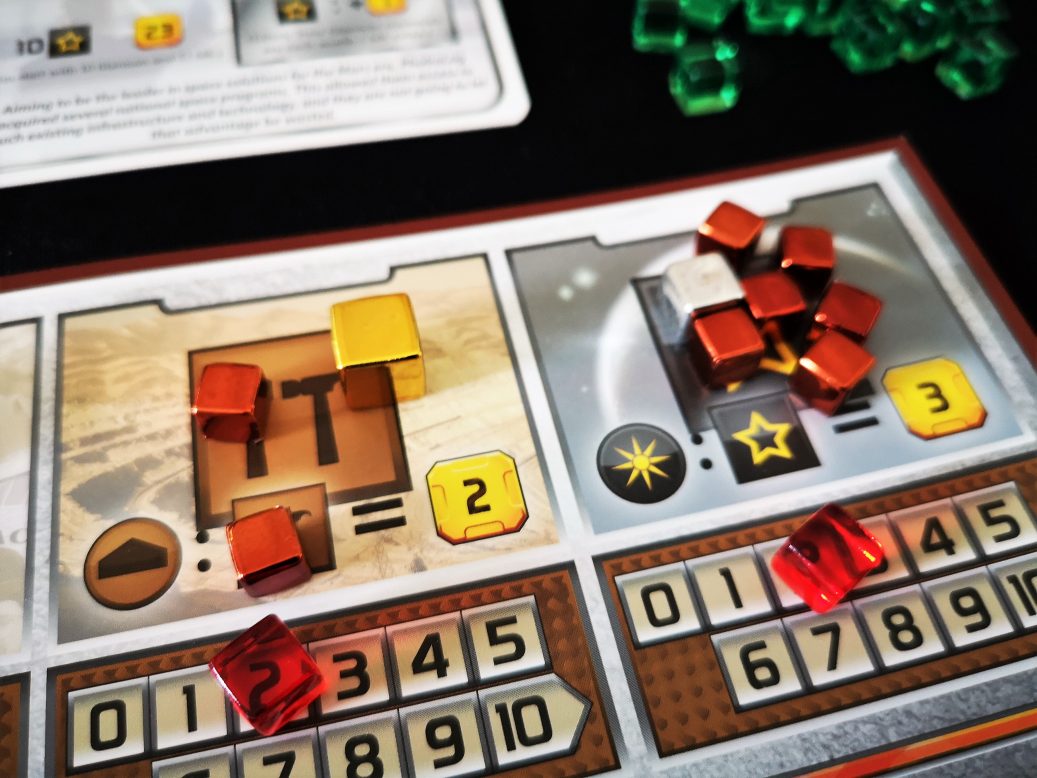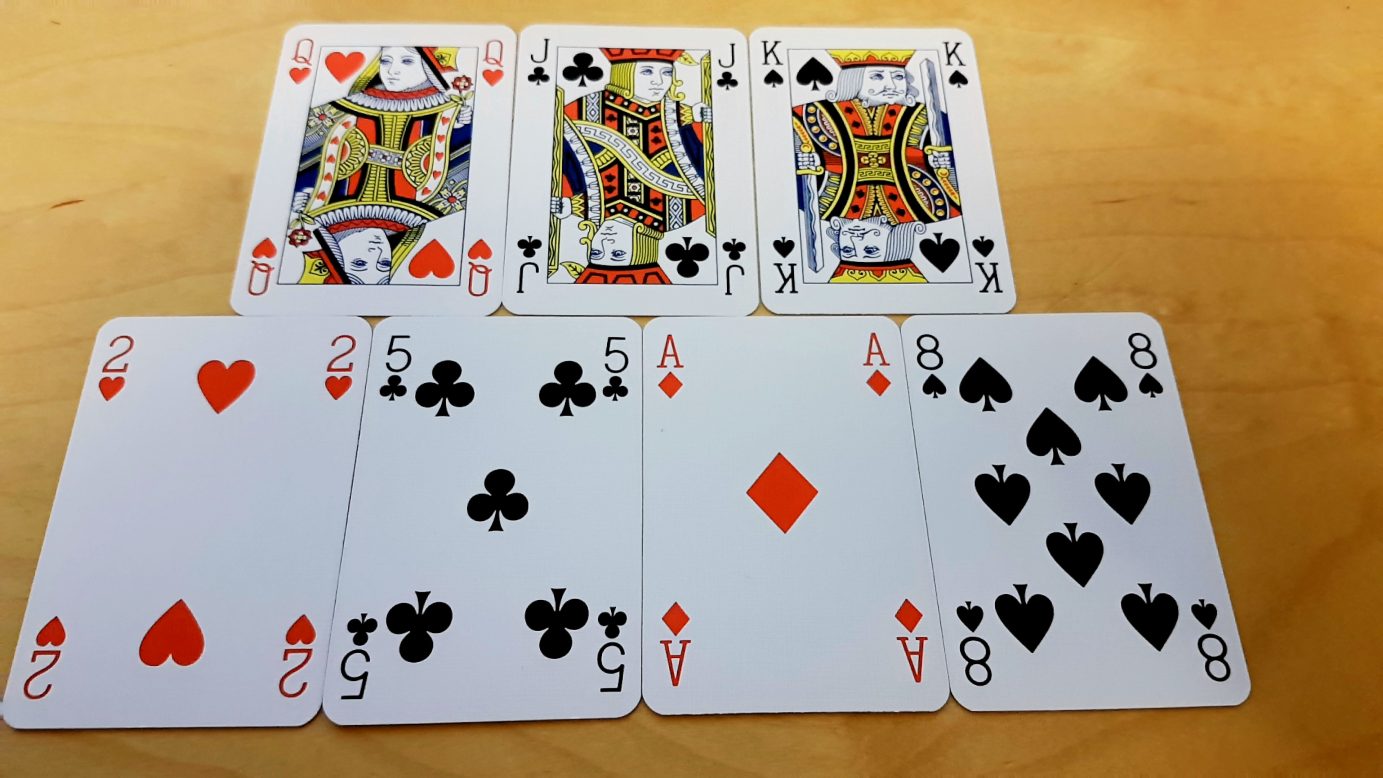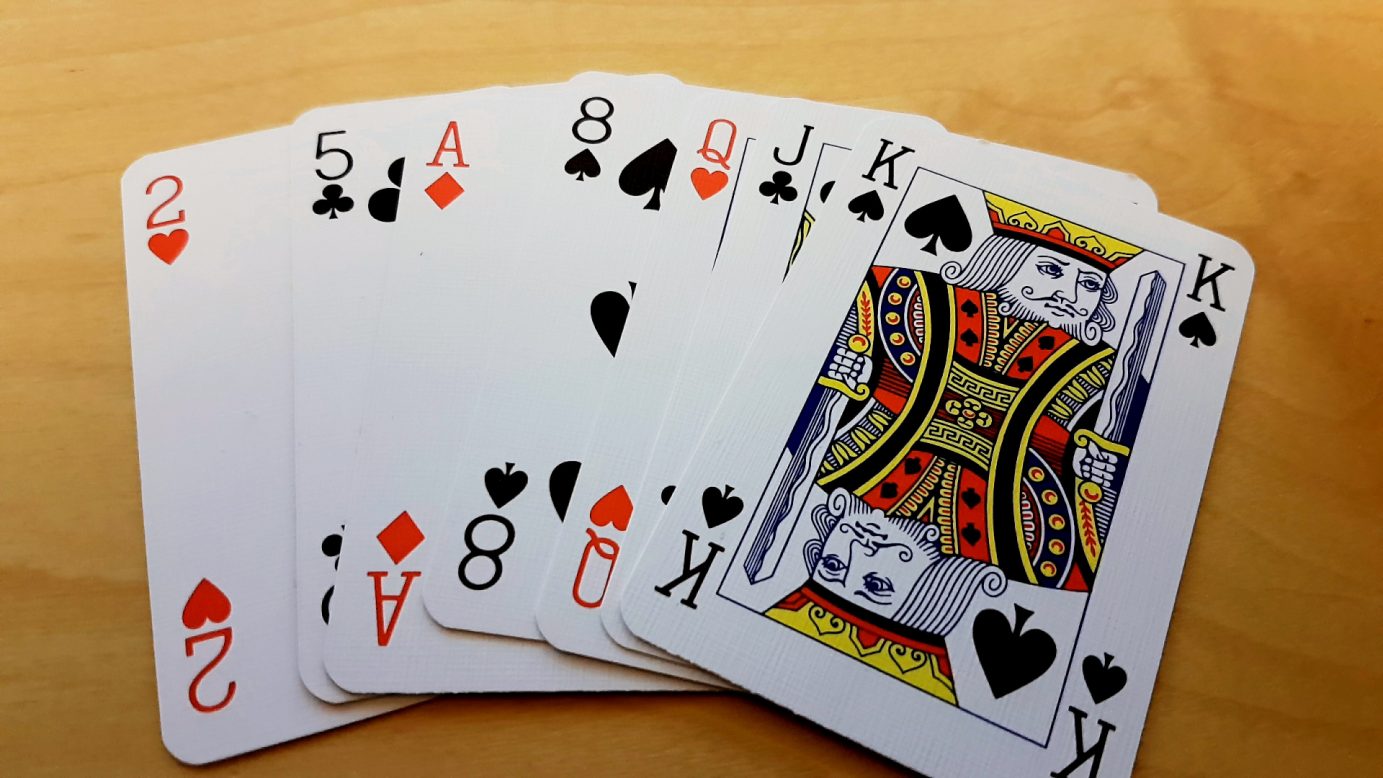Catan
[ Catan Review | Catan Accessibility Teardown ]
I may not like Catan much as a game, but I had a lot of complimentary things to say about the accessibility of its design. There’s an interesting feature you can see in games that achieve genuinely mainstream success… they trend towards being more accessible than many equivalent but less popular games. One of the things that has to happen in order for a game to reach this kind of market penetration is that rough edges need to be knocked away. Iteration over a design over several editions gradually solves accessibility problems and even builds in natural affordances.
There are two of these that I think are especially good in Catan. The first is that It’s a game with a modular hex-based board and it comes with a frame into which those hexes can be placed. It makes the whole thing robust in a way that looser approaches don’t. It’s wonderful – you can knock the table about and don’t need to worry about it being represented in your game like a geological disaster.

But there’s a secondary feature I love about Catan. There’s a saying that ‘accessibility is being able to get into the party. Diversity is being invited. Inclusion is being asked to dance’. Sometimes games introduce features that lean into this by reducing the cognitive burden on players through visual cues. Catan is built on probability, and if you’re not great at calculating which of your options are the best from the numbers it helpfully gives you the hints right on the discs.

‘More pips typically means more resources’, this says. It hugely undercuts the level of numeracy the game would otherwise expect and gives a scaffold to strategizing in play. It’s a superb feature that I wish I saw in more games.
Monopoly
[ Monopoly Review | Monopoly Accessibility Teardown ]
Yep, there are design lessons in this most famous of board-games that people still aren’t taking to heart. If you want to get into the position to be selling millions of copies a year instead of a few thousand in a lifetime… well. It’s not a bad idea to look at the games doing what you want to be doing.
Monopoly is a pretty accessible game for a lot of reasons, but many of them are just because it’s not really a very skilful game. However, you know the iconic tokens that have become emblematic of Monopoly? The hat? The car? The wee Scotty dug? They were originally just charms taken from a bracelet. Cheap. Easy. Incredibly accessible.

Every different token has its own form factor. That permits for blind players to tell what’s going on by touch, and also resolves any issues that would be introduced by colour coding otherwise identical figures. The meeple might be one of the instantly identifiable icons of hobbyist gaming but its widespread adoption was a massive step backwards in terms of accessibility. When so many games introduced these instead of more whimsical tokens they added a considerable barrier to play that absolutely didn’t have to be there.
In an ideal world every game would have its own idiosyncratic selection of unique and thematic tokens, but that’s expensive and it’s usually something you only see in the more over-produced luxury games. A handful of monopoly tokens, or their equivalents, would have a considerable positive accessibility impact on more games than I could possibly count. If they could be colour coded too you’d see this hobby making real accessibility strides in a heart-beat.
Speaking of accessible, tactile pieces that are already in very common circulation…
Chess
Don’t worry, I’m not going to make this list entirely about games you’d maybe dismissed as being a bit outdated by virtue of their age. Chess isn’t quite as accessible as Monopoly as far as tactile tokens go because they don’t permit (usually) players to differentiate white from black or pawn from pawn. Other than that, it’s great you can tell different kinds of pieces by touch.
But chess has another feature I’d love to see in more games – unambiguous referencing. Chess has a whole notation system built on the idea of lettered columns and numbered rows. Knight to E3. Bishop to B4. It’s such a reliable, robust system that most people don’t even think about what it does – it permit describability as a core function of the game board.
We talk about verbalisation a lot on the blog – that’s basically a fancy way to describe how easy it is for someone to say what they want to happen. Many game boards are busy and complex and don’t make it easy for players to separate out what they want to do and where they want to do it. Chess solved that centuries ago. Some games are even massively improved by grid references – imagine how much more thematic Memoir ’44 would become if you could press a finger to your ear and yell ‘ARTILLERY STRIKE IN SECTOR G5!’

And yet, few game boards make use of their otherwise unused margins to provide this important accessibility aid. It’s a wasted opportunity.
That design lesson doesn’t need to be as stark as co-ordinates either. Named landmarks on the board do a wonderful job in alleviating ambiguity in game descriptions. ‘Place my armies north of the swamp of sorrows, in the forest of tears’. Physically indicating a location on a board can be difficult for some people. Verbally describing it might be cumbersome. Chess made that a non-issue in about the 12th century. When are hobbyist games going to catch up?
Scythe & Sagrada
[ Scythe Review | Scythe Accessibility Teardown | Sagrada Review | Sagrada Accessibility Teardown ]
See, I told you this wouldn’t all be ancient games. I’m naming both of these here because they do the same thing but in slightly different ways. They give thick card-stock that provide indentations in the boards themselves to house components. And it’s fantastic.

See, games can be raucous affairs. People get excited. Pieces get nudged. Things get knocked about. People hit the table in excitement.
And for some games, barring a filming crew recording the state of the game before it was upset, that’s pretty much it. The whole game gets randomised like a new starting seed for Civilization’s world generation. You had four steel, two titanium. Four plants. Whoops, you sneezed and your arm swept the table. Now you have six power and four money. I’m sure that won’t have an impact on the game. Oh wait.

Indentations for complex game states is a marvelous way of adding a solidity to play that makes the impact of that kind of pertubation much less noticeable. You see something similar in the way Ingenious handles its scoring.

But as with a lot of really good accessible design, there’s a secondary benefit here and it’s that it massively reduces the cognitive load of playing. Sagrada for example begins with a window that is full of rich promise and possibility. So many places your dice can go.

And then at the end of the game it focuses your attention on the handful of spaces that actually matter, making you curse the Gods that your early foolishness brought you so low.

Scythe doubles down on this design philosophy by permitting your faction to be meaningfully upgradeable and also trivial to cognitively parse. No need to work your way through a massive hand of power-up cards. Just look at your board. The indentations will guide you.
BUT EVEN MORE THAN THAT! These indentations are also tactile indicators and they can convey huge amounts of nuanced information to a blind player. Even a little indentation between squares on a board can be worth its weight in gold from an accessibility perspective.
I really wish more games would make use of the physicality of their boards to convey information. Learn from these games.
Playing Cards
Okay, I’m not done pointing out the amazing accessibility affordances in games you don’t think about. I’m sure you’ve got a deck of cards lying around somewhere. Go grab them and take a look at their design.

See what I mean? No? Well, let me show you. Let me rotate that picture 180 degrees.

Cool, right? It doesn’t matter which way around you rotate the card it’s still 100% readable. But there’s more! The cards permit ease of compression – you can hold a load of them in your hand and leave only the edges showing. No key information is blocked. Look what happens if you fan to the right :

And if you’re a leftie:

There’s no real way you can hold a hand of playing cards incorrectly. There’s no real way to accidentally obscure the key information. That makes them comfortable to use, and if someone is physically unable to hold the cards they work perfectly in a card holder.

A number of games already do this of course – the playing card style of component design isn’t unknown in games. Very few though manage the trick of permitting their cards to be held upside down, left to right and in a card-holder without any thought going into it.
Again, there’s a reason that some things get mainstream success and often a major factor of this is how easy they make it for people to use them.
[ previous page | next page ]
